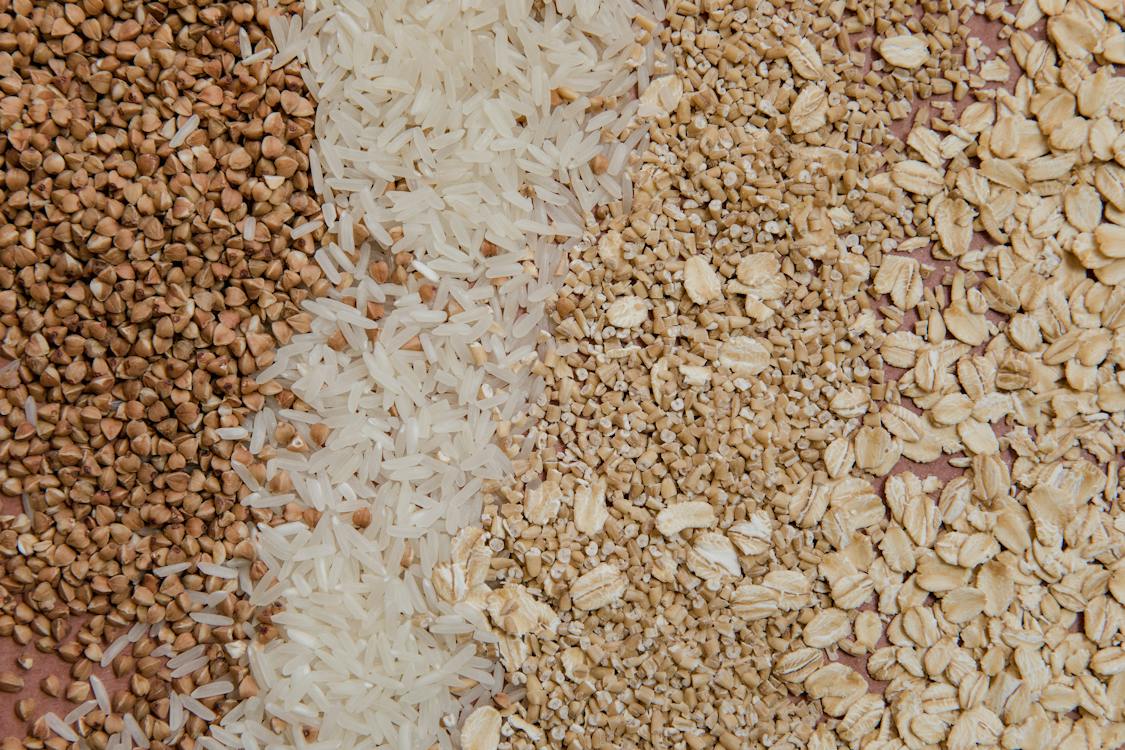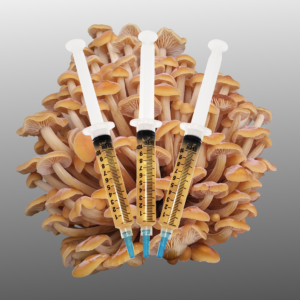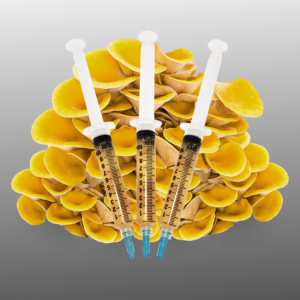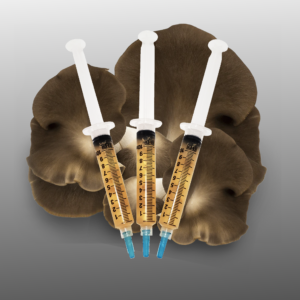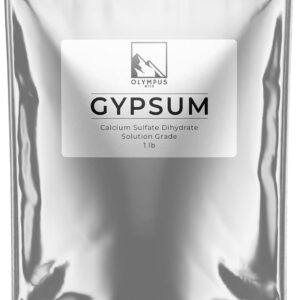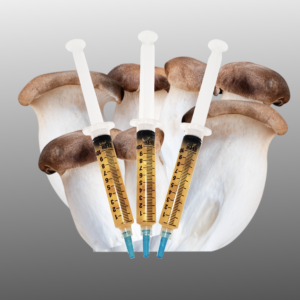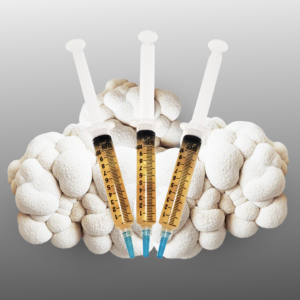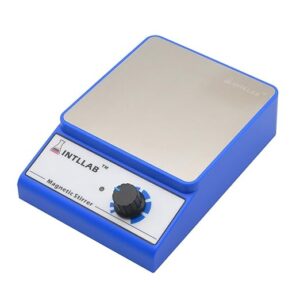Table of Contents:
- What is Mushroom Spawn?
- Different Kinds of Mushroom Spawn
- Choosing the Right Spawn for Different Mushrooms
- Making Grain Spawn in a Clean Space
- Using Grain Spawn to Grow More Mushrooms
What is Mushroom Spawn?
Growing mushrooms is a fascinating hobby, and at the heart of it is something called mushroom spawn. But what exactly is mushroom spawn? Mushroom spawn is the mushroom starter – it’s the part of the mushroom growing process necessary for success. Let’s take a closer look at what it is.
- Different Kinds of Mushroom Spawn
When it comes to growing mushrooms, you have various options to get started. Here are some of the main types:
a. Agar Spawn: This one is used mostly in labs to make specific types of mushrooms by copying their genes. This is usually a precursor to all other forms of spawn.
b. Wood Spawn: Made from cleaned and tiny wood pieces, it’s perfect for mushrooms that love to grow on wood, like shiitake and oyster mushrooms.
c. Grain Spawn: This is like mushroom seeds made from cleaned and cooked grains. It works well for many types of mushrooms.
d. Liquid Spawn: It’s when you mix mushroom mycelium with sugar-rich, sterile water, making it easier to expand a cultivar for mass inoculation.
- Choosing the Right Spawn for Different Mushrooms
The kind of mushroom you want to grow helps decide what type of spawn you should use. Here are some suggestions:
a. Grain Spawn: The flexible oyster mushroom is a great match for grain spawn. It can grow on many types of grains, making it a good choice.
b. Wood Spawn: Shiitake mushrooms love wood, so wood spawn is perfect for them. The wood chips and sawdust are just what they need.
c. Agar Spawn: This one is best in a lab workspace, to propagate mushroom strains, isolating specific traits.
d. Liquid Spawn: Liquid spawn is excellent for mushrooms like Cordyceps militaris for mass inoculating grain jars.
- Making Grain Spawn in a Clean Space
Creating your own grain spawn is an essential skill for mushroom growers. To keep things clean and prevent contamination, it’s a good idea to work in a clean space, like a Laminar Flow Hood or Still-Air-Box. Here’s how to do it:
What You Need:
- Some suitable grain (like rye, millet, or wheat)
- Jars with lids
- A pressure cooker or autoclave
- Mushroom spores or mycelium culture
- Alcohol for cleaning
- A source of fire (like an alcohol burner or propane torch)
- A Laminar Flow Hood or Still-Air-Box
Grains for Mushroom Spawn:
- Rye: Rye grain is a popular choice for mushroom spawn due to its ability to hold moisture and provide a stable environment for mycelium growth.
- Wheat: Wheat grain is commonly used for spawn production and is suitable for many mushroom species.
- Millet: Millet is another grain option that works well for mushroom spawn and is known for its consistency and uniform texture.
- Barley: Barley grains are suitable for several mushroom species and are known for their high water-holding capacity.
- Brown Rice: Brown rice is a favorite for home cultivators and is suitable for various fungi, especially those requiring a finer grain texture.
Woods for Mushroom Spawn:
- Sawdust: Hardwood sawdust, such as oak, maple, or beech, is commonly used as a substrate for mushroom spawn. It’s often mixed with other ingredients like bran or gypsum.
- Wood Chips: Coarsely ground hardwood wood chips can be used for spawn production, particularly for fungi that colonize larger substrates.
- Wood Shavings: Wood shavings, typically made from hardwood, can serve as a suitable material for spawn production.
- Hardwood Fuel Pellets: Hardwood fuel pellets can be used for spawn production and are an efficient choice for some mushroom species due to their compressed and uniform structure.
Bulk Substrates for Mass Mushroom Cultivation:
- Straw: Straw is a widely used bulk substrate for mushroom cultivation, especially for species like oyster mushrooms. It is typically pasteurized and mixed with other ingredients.
- Horse Manure: Composted horse manure, often referred to as “horse poo,” can be used as a bulk substrate for certain mushroom species, including Psilocybe cubensis.
- Coco Coir: Coconut coir or coco coir is a popular choice for many fungi. It’s a renewable and sustainable option often used with oyster mushrooms.
- Hardwood Sawdust: Hardwood sawdust is not only suitable for spawn but can also be used as a bulk substrate for wood-loving species like shiitake.
- Wheat Straw: Wheat straw can be pasteurized and used as a bulk substrate for a range of mushrooms, including shiitake and maitake.
- Coffee Grounds: Used coffee grounds can be an excellent bulk substrate for certain gourmet mushroom species, such as king oyster mushrooms.
- Gypsum: Gypsum can be added to bulk substrates to improve texture and moisture retention, making it more favorable for mushroom growth.
The choice of grains, woods, and bulk substrates depends on the mushroom species you are cultivating, the available materials, and your specific cultivation method. Proper pasteurization or sterilization of these materials is crucial to prevent contamination and ensure successful mushroom cultivation.
How to Do It:
a. Get the Grain Ready: First, make sure your chosen grain is clean and soak it in water for a while. Then, let it drain and partly dry.
b. Sterilize the Jars: Put the grain into jars with some extra space at the top. Seal the jars and use a pressure cooker or autoclave to sterilize them at high pressure and temperature for about an hour.
c. Add the Mushroom Mycelium in a Clean Place: In a clean space like a Laminar Flow Hood or Still-Air-Box, sterilize all your tools and the area. Then, add the mushroom spores or mycelium culture to the cooled jars.
d. Let It Grow: Give it a few weeks for the mycelium to grow and take over the grain.
e. Store It: Once the mycelium is ready, you can use it right away or save it for later in a cool, dark place.
- Using Grain Spawn to Grow More Mushrooms
After you’ve made your grain spawn, the next step is to use it to grow more mushrooms. Here’s how to do it:
What You Need:
- A bulk substrate (like straw, coffee grounds, or hardwood sawdust)
- The jars with grain spawn
- Bags or containers for growing
- Equipment for sterilizing or pasteurizing
- A place to keep things warm
- A spot to grow the mushrooms
How to Do It:
a. Prepare the Bulk Substrate: First, choose the kind of bulk substrate you want and get it ready by cleaning or pasteurizing it to get rid of any potential contaminants. Pasteurization usually takes a few hours at an internal temperature of 200f
b. Mix the Spawn and Substrate: Once your substrate has cooled down, mix it with the fully colonized grain spawn. The right mix depends on the type of mushroom you’re growing.
c. Give It Time to Colonize: Put the mix in bags or containers, seal them, and place them in proper temps to incubate. This is where the mycelium grows, it can take a few weeks. Incubation is relatively warmer and more humid than fruiting conditions.
d. Let It Fruit: Once everything is colonized by the mycelium, it’s time to start the fruiting process for your mushroom species. This usually involves lower temperatures, some light, and relatively less humidity. With an introduction to fresh air the mushrooms should start growing within a few weeks.
In summary, understanding mushroom spawn and how to use it is essential for successful mushroom cultivation. Choosing the right spawn for your mushroom species, creating it in a clean environment, and following the right steps will help you cultivate a bountiful mushroom harvest. Happy growing!
-
Golden Enoki Liquid Culture
-
Golden Oyster Liquid Culture
-
Grey Oyster Liquid Culture
-
Gypsum Powder for Mushroom Substrate (1 lb)
-
King Oyster Liquid Culture
-
Lion’s Mane Liquid Culture
-
Magnetic Stirrer/Mixer w/stir bar (No Heat) Stirring Capacity: 3000ml
-
Media Storage Bottle – Borosilicate Glass – (500ml – 2pcs)
-
Medical Nitrile Exam Gloves, Latex-Free & Powder-Free Non-Sterile Food Safe Cleaning Disposable Glove, 100 Pcs

